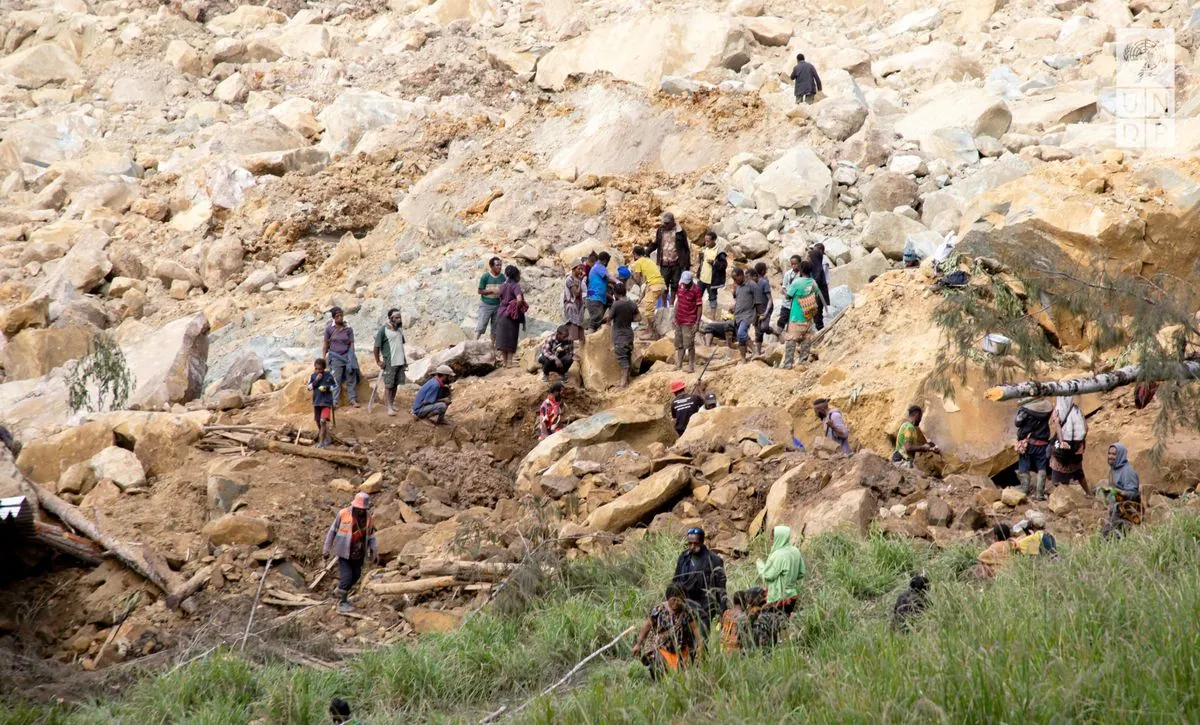Hurricane Helene Devastates Southeast U.S., Death Toll Nears 100
Hurricane Helene wreaks havoc across the Southeast U.S., claiming nearly 100 lives. Rescue efforts intensify in North Carolina as officials struggle to deliver supplies to isolated areas amid widespread destruction.

Hurricane Helene has left a trail of devastation across the southeastern United States, with the death toll approaching 100 as of September 30, 2024. The storm, which made landfall on September 26 as a Category 4 hurricane with winds of 140 mph, has caused widespread destruction and flooding in multiple states.
North Carolina has been particularly hard-hit, with 91 confirmed fatalities across several states. The mountain city of Asheville and surrounding Buncombe County reported 30 deaths alone. Governor Roy Cooper anticipates the toll will rise as rescue teams reach isolated areas cut off by collapsed infrastructure and extensive flooding.
The Blue Ridge Mountains surrounding Asheville, known for their natural beauty, have contributed to the region's isolation in the wake of the disaster. More than 50 search teams are combing the area for stranded individuals, with one mission rescuing 41 people north of Asheville and another focusing on saving a single infant.

Efforts to distribute supplies to affected areas have been hampered by damaged roads and infrastructure. Buncombe County Manager Avril Pinder has pledged to deliver food and water to Asheville by Monday, October 1. The National Guard is playing a crucial role in these operations, as they have in disaster responses since the 1800s.
President Joe Biden has described the storm's impact as "stunning" and plans to visit the affected areas in the coming week, provided his presence does not interfere with ongoing rescue and recovery efforts. The President has approved a disaster declaration for North Carolina, making federal funding available to affected individuals.
The storm's effects extend beyond North Carolina. In Florida's Big Bend region, known for its natural springs and wildlife, residents are grappling with extensive property damage. Georgia Governor Brian Kemp likened the destruction to the aftermath of a bomb explosion. South Carolina, with its 187-mile coastline, reported at least 25 fatalities, making Helene the deadliest tropical cyclone for the state since Hurricane Hugo in 1989.
"I cannot convey in words the sorrow, heartbreak and devastation my sisters and I are going through."
The economic impact of Hurricane Helene is expected to be substantial, with Moody's Analytics estimating property damage between $15 billion and $26 billion. This could potentially rival the costs incurred by Hurricane Katrina in 2005, which remains the costliest U.S. hurricane on record.
Climate scientists point out that global warming is exacerbating conditions that allow such storms to thrive. Hurricanes can now rapidly intensify in warming waters, sometimes becoming powerful cyclones within hours. This phenomenon, combined with the potential for increased storm surge and inland flooding, poses significant challenges for coastal communities and emergency responders.
As the Southeast begins its long recovery process, meteorologists at the National Hurricane Center are closely monitoring a new tropical depression in the eastern Atlantic Ocean. This system, located about 630 miles west-southwest of the Cabo Verde Islands, could potentially develop into a "formidable hurricane" by October 2. Hurricane hunters may soon be dispatched to gather crucial data on this developing storm.
The Atlantic hurricane season, which typically runs from June 1 to November 30, continues to pose threats to coastal regions. As communities in the Southeast work to rebuild, the importance of preparedness and resilience in the face of increasingly severe weather events becomes ever more apparent.


































